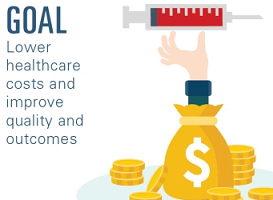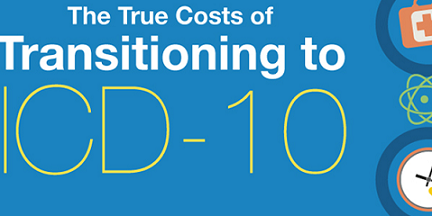Using a picture and visual graphics to represent data and information is called an infographic. It is a great way to display statistical data that shows comparisons or charts that come from research and reports. In these infographics, see the impact data breaches are having on the US healthcare industry, how privacy and security are key pillars to effectively serving patients and avoiding costly data breaches, and what the trends and challenges were in 2015. See other infographics we have featured.

Healthcare Data Breaches Cost $6 Billion A Year
Data breaches cost the US healthcare industry over $6 billion a year. In the last two years, 94% of healthcare organizations have experienced a data breach, with 40% reporting at least five breaches. Despite the prevalence and cost, over half of the healthcare organizations in the US still do not have the technologies or expertise needed to prevent or quickly detect a data breach.
Royal Jay has put together a detailed infographic based on The Fifth Annual Benchmark Study on Privacy and Security of Healthcare Data by Ponemon Institute. It breaks down the impact data breaches are having on the US healthcare industry, covering everything from prevalence rates, cost to patient and provider, notable breaches, types of data stolen, vulnerabilities and action items for minimizing risk.
This infographic is brought to you by Royal Jay (@RoyalJayTech), whose unique ability to understand and immerse itself in a client’s business challenges allows them to consistently ship software that exceeds expectation. They are not an “outsourced vendor”. They are trusted advisors, always bringing increased value and technical expertise to the table.
HIPAA Compliance: Protecting Electronic Health Information
In the world of Health Information Technology (HIT), privacy and security are key pillars to effectively serving patients and avoiding costly data breaches. As data breaches and cybercrime advance rapidly, taking every precaution to safeguard ePHI as well as patients’ rights and protections is critical. Ensuring data centers and managed services are HIPAA-compliant helps guarantee that providers’ sensitive electronic Protected Health Information is safe and secure. See the facts and figures in the complete infographic.
This infographic is brought to you by Webair (@WebairInc), who offer secure, reliable Cloud and IT infrastructure solutions that are HIPAA-HITECH compliant and always available. In order to ensure maximum data protection and safe transmission of electronic Protected Health Information (ePHI) in the Cloud, they have implemented a number of safeguards required by HIPAA-HITECH. Their services are designed so that customers’ infrastructure is completely isolated from that of other clients. Each customer’s network is also segmented into private Virtual Local Area Networks (VLANs) facing the Internet.
 2015 Healthcare Privacy and Security Trends & Challenges
2015 Healthcare Privacy and Security Trends & Challenges
The healthcare industry saw many privacy and security trends and challenges in 2015 such as mega breaches, increased government oversight and the continued emergence of healthcare as a target. CynergisTek, Inc. created an infographic highlighting some of these trends and challenges, including the fact that hackers accessed over 100 million health records in 2015 and eight of the 10 largest healthcare hacks we’ve ever seen happened in 2015.
CynergisTek (@cynergistek) is a top-ranked information security and privacy consulting firm focused on healthcare. CynergisTek offers an array of solutions that help organizations measure privacy and security programs against regulatory requirements and assists in developing a best practice approach to risk management. Since 2004 the company has served as a partner to hundreds of healthcare providers, payers and vendors with a consulting team comprised of subject matter experts that have a passion for helping clients achieve success. CynergisTek is also dedicated to supporting and educating the industry by contributing to relevant associations such as HIMSS, AHIMA, HFMA, HCCA, AHIA, AHLA, IAPP and CHIME.
